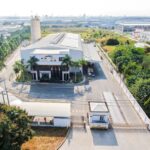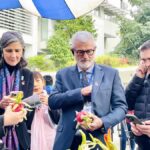The “Policy Dialogue: Enhancing International Cooperation and Multisectoral Coordination on Circular Economy in Agriculture” received attention from over 100 delegates from 70 domestic and international agencies, more than 20 provinces across the country, and hundreds of online participants. The event, held in Hanoi on the afternoon of July 8, 2024, was organized by the Ministry of Agriculture and Rural Development in collaboration with the United Nations Development Program (UNDP) in Vietnam.
EVERYTHING IS AN INPUT FOR PRODUCTION
In his opening remarks, Deputy Minister of Agriculture and Rural Development Phung Duc Tien affirmed: “Developing a circular economy in agriculture is both a requirement and an inevitable trend, as well as a solution for sustainable and efficient agricultural development to implement international commitments, national and sectoral tasks on green and sustainable development.”
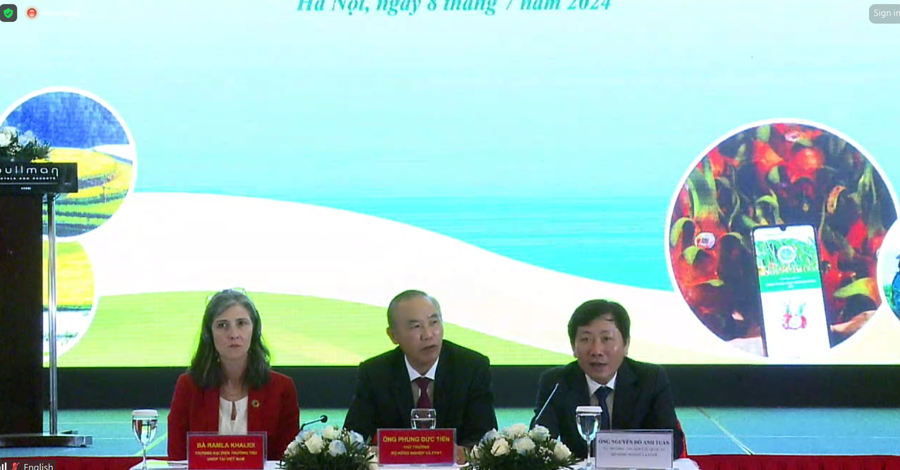
Emphasizing the practical importance of circular agriculture, ensuring economic, social, and environmental benefits when applying circular agriculture models, Deputy Minister Phung Duc Tien stated that more than ever, climate change, natural resource scarcity, environmental degradation, and pandemics require nations to change their development and production thinking based on the fundamental principle: Everything is an input for something else.”
Based on strengthening international multilateral cooperation and multisectoral coordination, the Deputy Minister called upon the international community, ministries, and sectors from central to local levels, as well as the private sector, to join hands in supporting and promoting the implementation of the ten goals and six tasks on circular agriculture in the Project “Development of Science and Technology Application, Transfer and Circular Economy Promotion in Agriculture by 2030,” approved by the Prime Minister in Decision No. 540/QD-TTg dated June 19, 2024. The Ministry of Agriculture and Rural Development takes the lead in focusing on research, technology application, market development, policy mechanisms, international cooperation, and communication about circular agriculture.
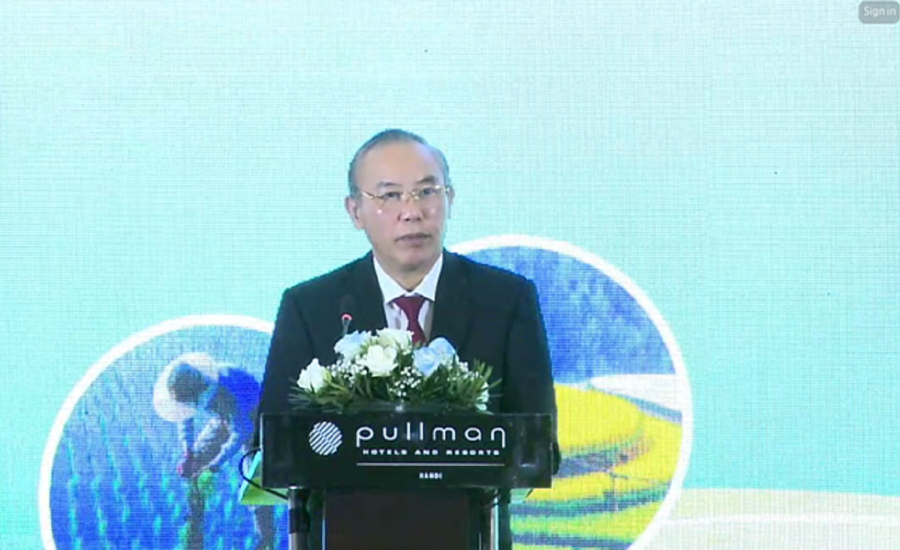
Co-chairing the Dialogue, Ms. Ramla Khalidi, Resident Representative of the United Nations Development Program (UNDP) in Vietnam, stated that promoting the recovery of resources from agricultural waste would contribute to the reuse, production of materials, proteins, energy, and nutrients. It will also enhance food quality and the resilience of smallholder households to the increasing impacts of climate change. In addition, we can all contribute to promoting the market for agricultural products from circular economy models.
According to Ms. Ramla Khalidi, in agricultural production, we can rely on science, technology, and successful pilots in Vietnam to design farming systems that efficiently use natural resources at the farm level and along the entire supply chain, with the participation of all parties, such as processing, transportation, and retail, thereby promoting responsible supply from farm to table.
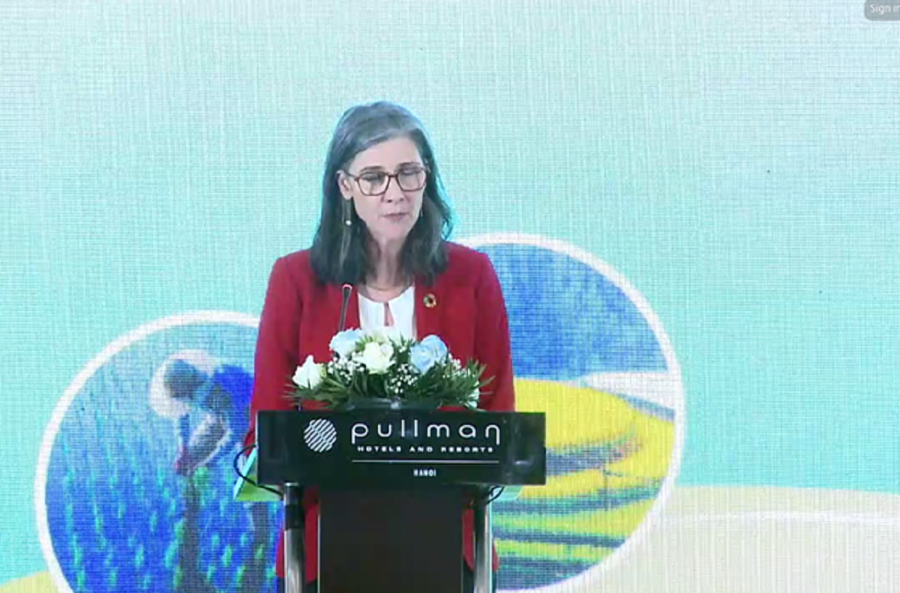
During the dialogue sessions, representatives of international organizations, the private sector, and non-governmental organizations shared mechanisms for international cooperation and multisectoral coordination to promote circular agriculture practices and introduce successful circular agriculture models.
In particular, the delegates emphasized the public-private partnership in the success of circular agriculture, specifically the proactive role of the private sector in applying science and technology and implementing initiatives and advanced circular agriculture models.
MUCH BYPRODUCTS ARE STILL WASTED
Dr. Nguyen Anh Phong, Vice Director of the Institute of Policy and Strategy for Agriculture and Rural Development (IPSARD), said that in the field of crop production in Vietnam, many byproducts are still wasted.
Specifically, after harvesting, the main byproducts are stems, of which 38% are burned in the field; 28% are used as animal feed; 9% are left in the field; 5% are used for cultivation; 5% are used for composting, and the rest are treated differently.
‘For byproducts and waste in livestock farming, the rate of farms treating livestock waste currently reaches 96.1%. However, the rate of households treating waste in livestock farming is only 48.2%.
In the fisheries sector, shrimp processing generates about 35-45% byproducts, and catfish processing creates about 60-70% byproducts. Up to now, 90% of fishery byproducts have been collected and processed into useful products with higher value, serving the production of animal feed and the processing into higher-value products.
In the forestry sector, byproducts from logging in planted forests amount to about 16 million cubic meters of firewood annually, while wood processing leaves 8.6 million cubic meters of sawdust, ends, and scraps annually. Most of the byproducts in forestry have been collected and processed into plywood, wood chips, biological bedding for livestock, and wood pellets for fuel…
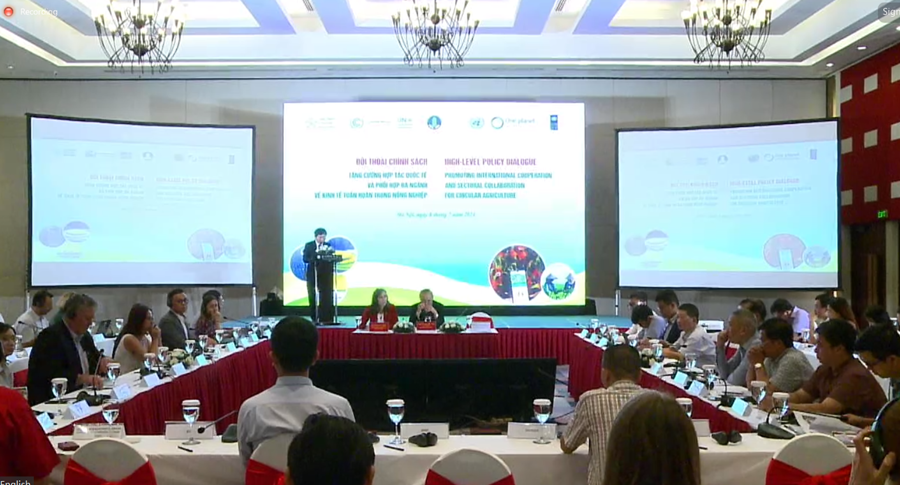
Dr. Phong pointed out several limitations in the development of the circular economy in the agricultural sector, such as farmers’ awareness of the necessity to transition to a circular economy model remaining vague and incomplete; the policy framework for developing a circular economy model is not yet perfect; the rate of collecting and processing agricultural byproducts to create added value is still low; models of the circular economy applying science and technology in Vietnam are not yet popular…
“There is a need for consistent policies, practices, and action plans at the national and local levels, and different sectors and value chains need to legalize and maintain a new direction. Multi-stakeholder collaboration space is essential to convene, connect, facilitate, and create opportunities for a shared vision and cooperative action among multiple actors and sectors.”
Ms. Maria Soledad Riestra, UNDP Chief Advisor on Effective Cooperation.
According to Ms. Maria Soledad Riestra, Chief Advisor on Effective Cooperation at UNDP, currently, more than 90% of the world’s raw materials are extracted and used wastefully. Meanwhile, secondary raw materials account for only 7.2% of the total raw material inputs returned to the economy.
“Approaches to the circular economy in the food system are very complex. Therefore, the challenges cannot be solved by an individual or organization alone. Thus, there is a need for coordinated action and a ‘whole-of-government’ and ‘whole-of-society’ approach to design and implement this new model,” emphasized Ms. Maria Soledad Riestra.
At the Dialogue, UNDP introduced the initial results obtained from implementing the NDC-Circular Economy (NDC-CE) Toolkit. This toolkit is designed to support Vietnam in identifying, prioritizing, implementing, and monitoring circular agriculture solutions to contribute to the goals of the Nationally Determined Contributions (NDCs).
At the Dialogue, UNDP also announced its upcoming study on the coffee and rice value chains in collaboration with units under the Ministry of Agriculture and Rural Development, such as the Institute of Policy and Strategy for Agriculture and Rural Development, the Institute of Livestock, and the Institute of Agricultural Economics, to develop new integrated measures for a low-carbon, circular agro-food value chain.
Bình Thuận’s Dragon Fruit: A New Path for Sustainable Agriculture and Reduced Emissions
The initial successes in growing dragon fruit and reducing greenhouse gas emissions, as well as carbon footprint tracking in Binh Thuan, are evidence that Vietnam has, is, and will be able to apply innovative approaches to develop sustainable agriculture, adapting to climate change…

